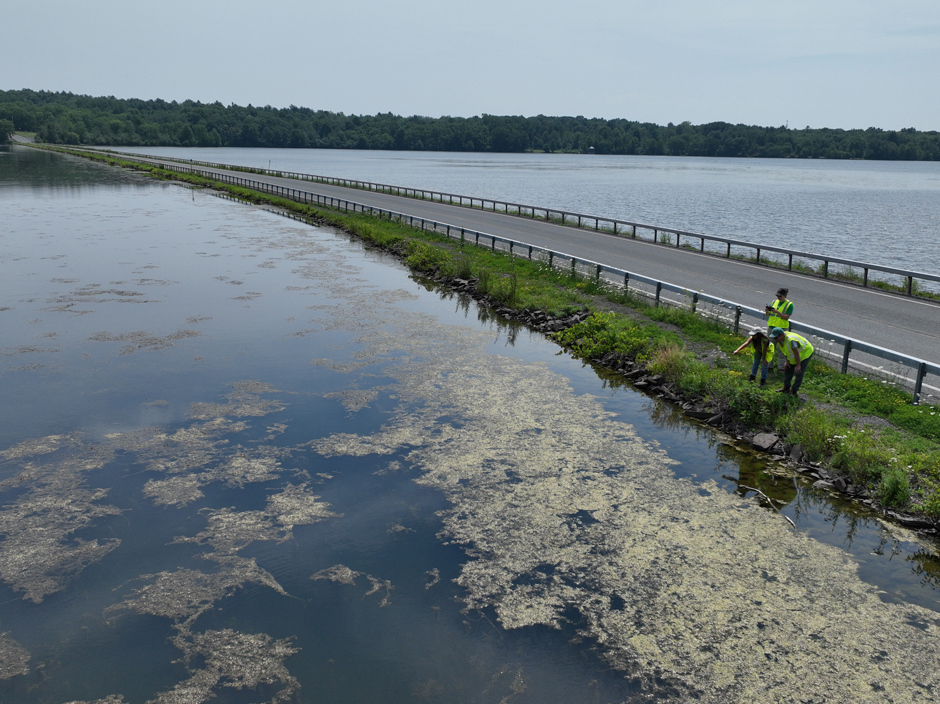Source Water Monitoring in Albany, New York: Tracing Water Quality throughout Tributaries
Thousands of US cities pull their drinking water from natural source waters like reservoirs, rivers, and streams, making overall watershed health a key consideration for water providers. In Albany, New York, the Albany Department of Water and Water Supply delivers drinking water to over 100,000 residents as well as monitors and manages the larger drinking water supply watershed.
Hannah Doherty, Environmental Specialist at the Albany Department of Water and Water Supply, spends her days working with a small team to monitor the drinking supply and the connected water bodies.
Doherty explains, “We’re the first to encounter the water that ends up being the drinking water. And I’m responsible for monitoring that water quality before it goes to the treatment plant and communicating potential issues with the plant to make adjustments to intake levels and how they might have to process the water based on the conditions.”

Water Department employees monitoring the Basic Creek Reservoir for harmful algal blooms from shore. (Credit: Albany Water Department)
Monitoring Source Water Resources
With a background in invasive species removal, wetland restoration, and reforestation, Doherty has the opportunity to study the entire watershed through multiple lenses while working to provide clean drinking water to the region she grew up in.
Doherty’s main job is to monitor the drinking water reservoirs, their tributaries, and the greater watershed to identify water quality issues early on, work with landowners to fix those issues, and inform the filtration plant. During these source water monitoring excursions, Doherty also gathers data and observations that assist her team in evaluating the success of ongoing restoration efforts.
If issues are detected, the team works together to trace the source of the issue back through the watershed and troubleshoot strategies to resolve the issue through outreach and educating land owners or large-scale restoration projects, depending on the source of the issue. Whatever solution is decided upon, the team will continue to monitor the source waters and the problem area to document progress.

Albany Water Department employee using a YSI ProDSS to measure water quality parameters (temperature, dissolved oxygen, pH, turbidity, and conductivity) during routine sampling on Alcove Reservoir. (Credit: Albany Water Department)
A YSI ProDSS is used at 21 monitoring sites—seven across the two reservoirs and fourteen in the tributary—to measure turbidity, conductivity, temperature, dissolved oxygen, and pH, and evaluate overall water quality.
“We make in-field decisions about what strategically makes sense to sample— for example, upstream and downstream of a potential source of pollution,” states Doherty.
Since the backup reservoir experiences an occasional harmful algal bloom, with even more rare occurrences in the main reservoir, the team also measures chlorophyll in a laboratory.
Consistent data collection establishes a baseline of conditions in the source water reservoirs and makes identifying changes and issues easier. While this applies to any water quality issue, harmful algal blooms are a growing concern in many freshwater lakes.

Albany Water Department employee collecting water samples from a beaver pond. (Albany Water Department)
Frequent data collection before, during, and after blooms helps make identifying the onset of blooms easier in the future and can help identify possible causes, such as excess nutrients, throughout the watershed. It also helps keep the treatment plant informed so they don’t take water during a bloom that impacts the intake area, and they are prepared to treat water depending on current conditions.
In addition to requiring special treatment to remove the toxins from source water experiencing a harmful algal bloom, algal blooms—both harmful and non-harmful—can clog filters and disrupt operations, leading to improperly sanitized water and possible shortages. Therefore, Doherty’s work is key to minimizing disruptions and keeping drinking water clean.

Winter water quality sampling through ice on Alcove Reservoir using YSI ProDSS. (Credit: Albany Water Department)
Conclusion
Knowing that she plays a role in ensuring continuous access to safe drinking water for the residents of Albany and working with a dedicated team are some of the most rewarding parts of the work for Doherty.
She explains, “Having clean drinking water is such a privilege, and something I never thought of much before joining this department, and now I feel it’s very rewarding that I, and the people of Albany, get to benefit from the work that I do every time I turn on my tap.”
“Working with a diverse team of people who all have their own expertise but are working together to accomplish the same goal of improving water quality is really energizing and fulfilling,” adds Doherty.
As a member of this team, Doherty has the opportunity to engage with the watershed on a much larger scale than just the drinking water reservoirs, understanding our source waters and improving the natural environment.

Tributary running into the north basin of the Alcove Reservoir. (Credit: Albany Water Department)




0 comments